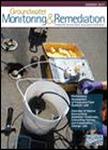版权所有:内蒙古大学图书馆 技术提供:维普资讯• 智图
内蒙古自治区呼和浩特市赛罕区大学西街235号 邮编: 010021

作者机构:Sam Marquis is a senior hydrogeologist at McLaren/Hart Environmental Engineering's Irvine California office. He is a registered geologist and environmental assessor in California and holds a B.S. in geology from Denison University and an M.S. in geology from Southern Methodist University. Marquis has served as project manager and/or technical lead for numerous soil and ground water remediation projects for Superfund sites Class I landfills oil fields refineries marine terminals gasoline service stations and real estate properties. His work focuses on ground water flow and solute transport modeling and on soil and ground water remediation design. He has presented and published numerous papers dealing with analytical and numerical modeling soil and ground water remediation tidally influenced hydrologic settings and carbonate depositional environments and diagenesis. Dennis Dineen is a managing principal geoscientist and assistant regional manager at McLaren/Hart's Irvine California office where he directs soil and ground water investigations and remediation projects. He received a B.S. in biology from the Illinois Institute of Technology and an M.S. in soil science from the University of California at Davis. He is a certified professional soil scientist and registered environmental assessor in California. He has developed McLaren/Hart's soil remediation feasibility laboratory overseen several large‐scale biological remediation projects and managed original scientific research culminating in the isolation of a newly identified bacterium capable of degrading polynuclear aromatic compounds.
出 版 物:《GROUND WATER MONITORING AND REMEDIATION》 (Groundwater Monit. Rem.)
年 卷 期:1994年第14卷第2期
页 面:105-119页
核心收录:
学科分类:08[工学] 081501[工学-水文学及水资源] 0815[工学-水利工程]
摘 要:his study compares pump and treat, bioremediation, and bioremediation/pump and treat for cleanup of a chemical plume using BIOPLUME II, a numerical solute transport code which simulates the transport of dissolved hydrocarbons under oxygen-limited biodegradation. Nineteen remediation scenarios were evaluated under one set of hydrogeologic and chemical conditions using different injection and extraction well configurations and injected dissolved oxygen (D.O.) concentrations of 8 or 50 parts per million (ppm). The cleanup objective was to reduce the concentration of naphthalene in the plume by the greatest percentage without increasing the volume of contaminated ground water in the aquifer. Each scenario was ranked in terms of plume control and contaminant concentration reduction for a one-year remediation period. Based on the performance criteria, scenarios that included pump and treat were superior in containing the migration of the plume and in restricting the plume from separating into smaller, localized plumes or hot spots. Bioremediation and bioremediation/pump-and-treat scenarios in which 50 ppm D.O. was injected throughout the plume (areal injection) or in the most concentrated portion of the plume (interior injection) achieved the greatest plume control and concentration reductions. Bioremediation cases with 8 ppm D.O. did not successfully control the plume or achieve major reductions in concentrations. The important conclusions drawn from the results were the following: (1) minimize the distance that the plume needs to be pulled toward extraction wells or that the D.O. needs to be circulated through to reach the contaminant zone;(2) inject water containing as high a level of D.O. as possible while meeting microbial and oxygen demand requirements;and (3) design the wellfield to produce convergent flow toward a central location and to minimize divergent flow and upgradient and intraplume stagnation areas. The study results suggest that bioremediation and bi